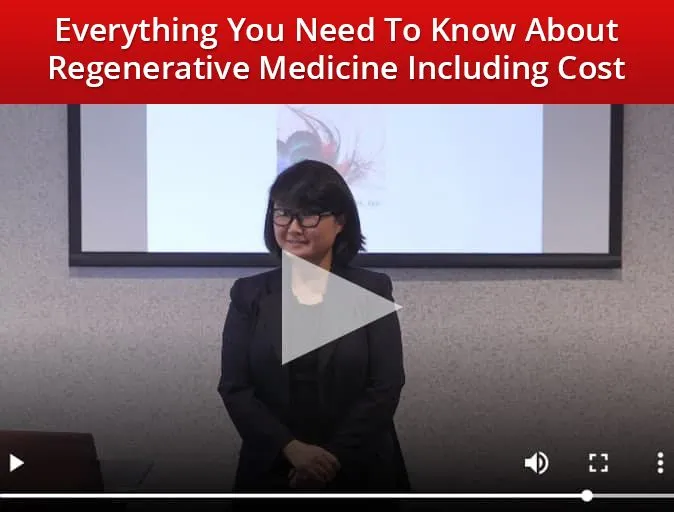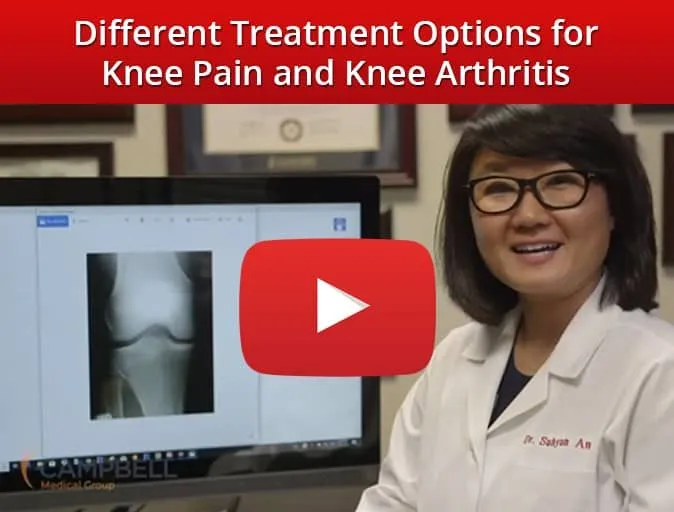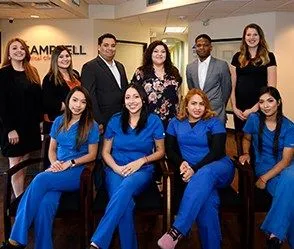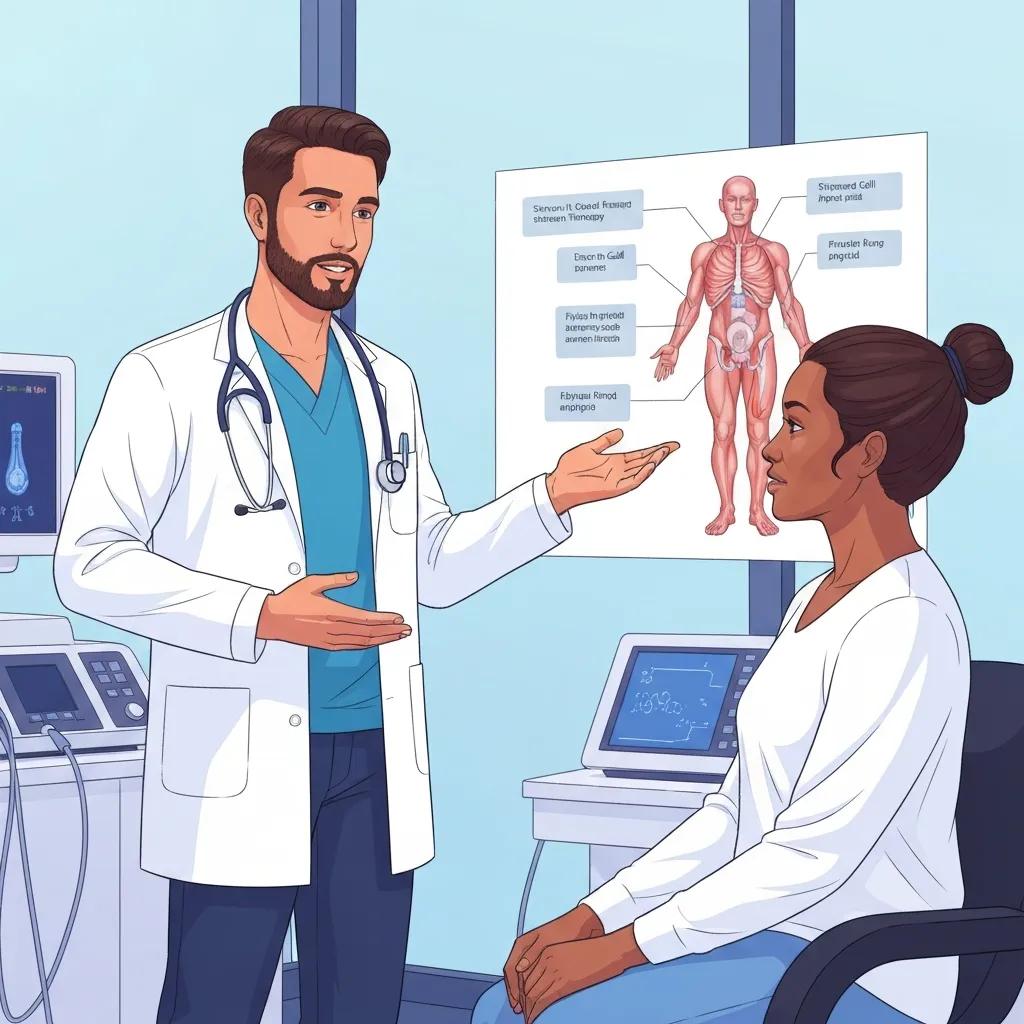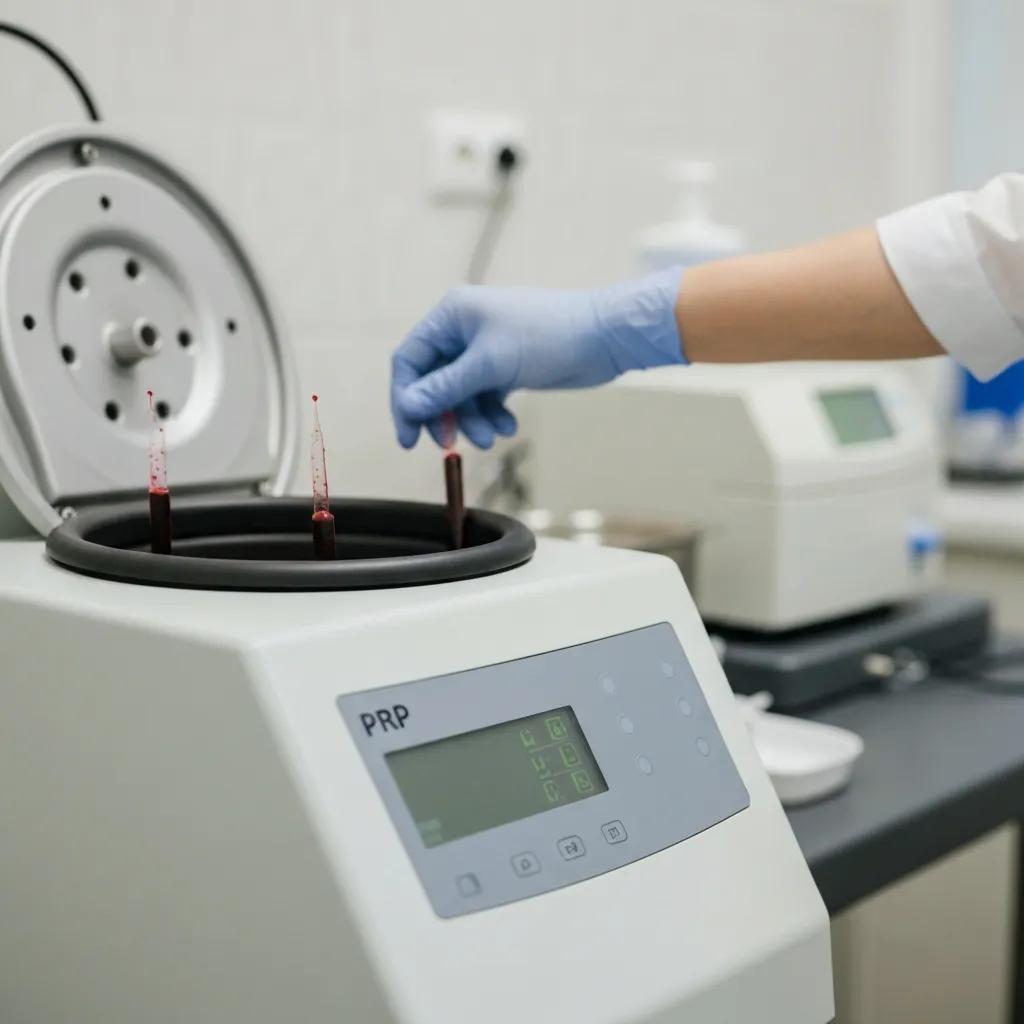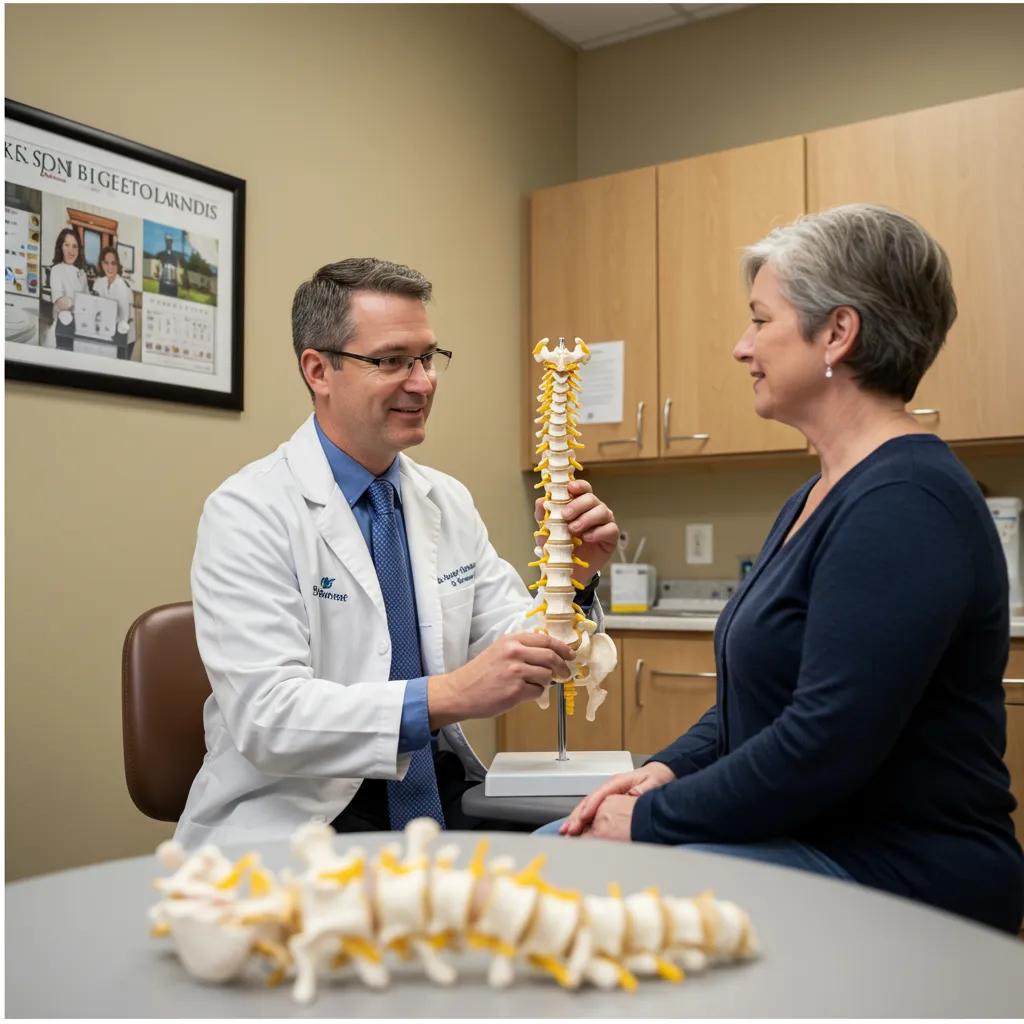
Houston Spine Experts: Complete Orthopaedic Care & Non-Surgical Pain Solutions
Experiencing persistent back or neck discomfort in Houston? Spine pain is a leading cause of disability, and finding expert orthopaedic care here can significantly restore your comfort and mobility. This guide covers common spine conditions, advanced non-surgical treatments, and how Campbell Clinic’s independent, patient-focused model provides personalized relief, free from insurance limitations. We’ll start by exploring prevalent spine issues and their underlying causes. Then, we’ll detail regenerative medicine, chiropractic adjustments, physical therapy, and targeted injections. You’ll also learn why Campbell Clinic’s approach differs from traditional methods. We’ll highlight warning signs that indicate a need for specialist care, how to prepare for your first visit, common patient concerns, success stories, and how to easily book your consultation. Finally, we’ll look at the cutting-edge trends in non-surgical spine care for 2025. By the end, you’ll be well-informed about your options for lasting pain relief and know exactly how to connect with a Houston spine specialist for tailored orthopaedic solutions.
Common Spine Conditions Treated by Houston Specialists
Spine conditions involve structural or neurological issues of the vertebral column that lead to pain, stiffness, and limited function. These often stem from disc degeneration, nerve compression, inflammation, or mechanical stress, significantly impacting daily life. For example, a herniated disc can press on spinal nerves, causing radiating leg pain and numbness. Understanding these conditions is key to effective, non-surgical management that restores alignment and eases discomfort.
Patients commonly face three main categories of spine conditions:
- Herniated or bulging discs that irritate nerves
- Spinal stenosis, causing narrowing of the spinal canal and nerve compression
- Degenerative disc disease, characterized by progressive wear and tear
These conditions share common mechanisms like inflammation, structural changes, and neural impingement, which our specialists address with rehabilitative and regenerative strategies, often avoiding immediate surgery. Recognizing these fundamental disorders will help you explore non-operative relief and specialist interventions.
What Causes Back and Neck Pain?
Back and neck pain can arise from various factors, including degenerative changes, injuries, poor posture, or muscle imbalances. Degenerative disc changes diminish the cushioning between vertebrae, altering load distribution and triggering inflammation. Injuries like strains or sprains overstretch ligaments and muscles, leading to protective spasms. Poor ergonomics can increase stress on spinal joints and supporting tissues, intensifying discomfort. For instance, maintaining a forward head posture for extended periods can increase cervical spine load by 30 percent, accelerating disc wear.
Often, underlying nerve irritation contributes to radiating symptoms. When nerve roots in the lumbar or cervical spine become pinched, it can cause tingling, weakness, and sharp pain. Addressing the root cause—whether mechanical or inflammatory—is crucial for developing effective non-surgical treatments that restore mobility and alleviate chronic aches.
How Herniated Discs and Spinal Stenosis Impact Spine Health
A herniated disc occurs when the soft, gel-like center of a disc pushes through a tear in its tougher exterior, compressing nearby nerve roots. This mechanical pressure triggers inflammation and shooting pain along the affected nerve’s path. Spinal stenosis involves a narrowing of the spinal canal, often due to bone spurs or thickened ligaments, which constricts neural elements. Patients might experience leg fatigue, cramping, or balance problems when walking, a condition known as neurogenic claudication.
Both conditions disrupt normal spinal mechanics and promote chronic inflammation. Non-surgical treatments focus on decompressing nerves, reducing swelling, and encouraging natural disc healing. Techniques like spinal decompression therapy and regenerative injections can relieve pressure without the risks associated with invasive surgery.
Research suggests that intradiscal platelet-rich plasma (PRP) shows promise as a minimally invasive treatment for discogenic low back pain.
Intradiscal Platelet-Rich Plasma (PRP) for Discogenic Low Back Pain
The aim of this article is to provide an overview of clinical and translational research on intradiscal platelet-rich plasma (PRP) as a minimally invasive treatment for discogenic low back pain.
Intradiscal platelet-rich plasma (PRP) injections for discogenic low back pain: an update, 2016
Symptoms of Sciatica and Chronic Spine Pain
Sciatica is characterized by pain that radiates from the lower back down the buttock and leg, often accompanied by numbness or tingling in the foot, following the path of the sciatic nerve. Chronic spine pain refers to persistent discomfort lasting over three months, which can vary in intensity and quality—from a dull ache to sharp, stabbing, or burning sensations. Patients may report:
- Pain that intensifies when standing or sitting for prolonged periods
- Radiating discomfort extending into the arms or legs
- Altered sensations like pins-and-needles or weakness
- A reduced range of motion and muscle stiffness
Early identification of these symptoms guides timely non-surgical interventions aimed at nerve decompression, muscle reconditioning, and inflammation control, helping to prevent long-term disability and enhance quality of life.
Non-Surgical Spine Pain Treatments Available in Houston
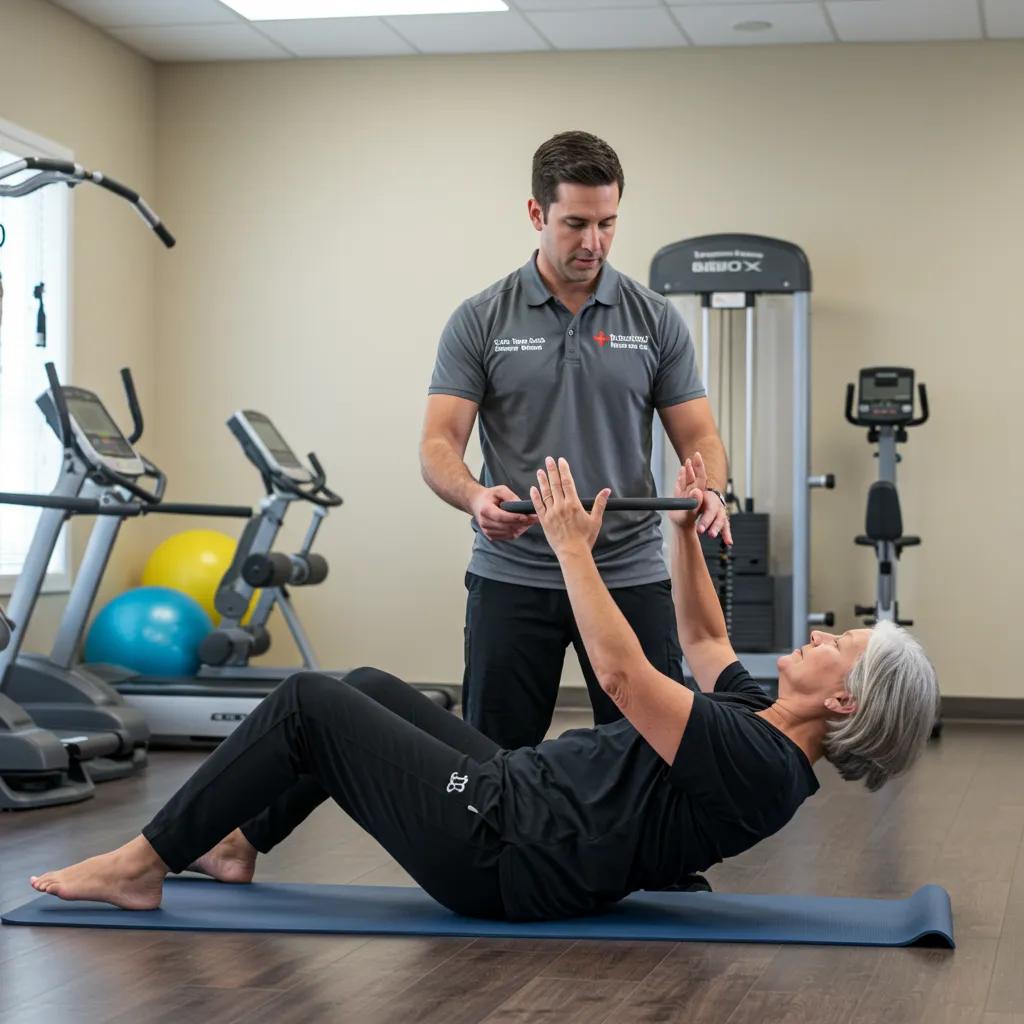
How Regenerative Medicine Aids Spine Pain Relief
Regenerative medicine utilizes cellular therapies, such as platelet-rich plasma (PRP) and stem cell injections, to accelerate tissue repair and manage inflammation. PRP concentrates growth factors from your own blood to target degenerative discs and inflamed ligaments, promoting collagen production. Stem cell therapy introduces progenitor cells that can transform into repair tissues, supporting disc regeneration and reducing nerve irritation. Clinical studies indicate that regenerative injections can reduce chronic back pain by up to 60 percent within six months, offering lasting relief and improved function. While promising, regenerative medicine for intervertebral disc degeneration requires further high-quality studies to fully establish long-term safety and efficacy.
Regenerative Medicine for Intervertebral Disc Degeneration: Evidence and Future Directions
Regenerative medicine, such as the use of mesenchymal stem cells or platelet-rich plasma, in intradiscal disc degeneration has shown preclinical and clinical positive results. Randomized clinical trials studying the potential of MSCs intradiscal injection have not been conducted, and PRP effect has been studied only preliminarily. Additional more powered high-quality studies are needed to really appreciate the long-term safety and efficacy of regenerative medicine approaches in IDD.
What is the clinical evidence on regenerative medicine in intervertebral disc degeneration?, L Cavagnaro, 2017
Benefits of Chiropractic Care for Spine Conditions
Chiropractic care involves spinal adjustments, mobilization, and decompression techniques to realign vertebrae and relieve nerve pressure. Spinal decompression therapy uses a specialized table to apply gentle traction, easing disc bulges and improving nutrient flow. Manual adjustments help restore proper joint movement and reduce muscle spasms. Patients often experience immediate pain reduction and an increased range of motion. Chiropractic treatments also include soft-tissue therapies and rehabilitative exercises designed to strengthen posture and core stability, thereby lowering the risk of recurrence.
How Physical Therapy Supports Back and Neck Pain Relief
Physical therapy employs targeted exercises, manual techniques, and patient education to strengthen the muscles that support the spine. Core conditioning programs enhance lumbar support, while cervical stabilization exercises alleviate neck strain. Manual therapy, such as myofascial release, helps reduce soft-tissue restrictions and pain. Balance and proprioception exercises improve neuromuscular control, reducing the risk of falls and re-injury. A structured rehabilitation plan promotes gradual progress, allowing for a safe return to daily activities and long-term spine health.
The Role of Pain Management Injections in Non-Surgical Care
Pain management injections deliver anti-inflammatory medication or anesthetics directly to the source of nerve irritation. Epidural steroid injections reduce inflammation around compressed nerve roots, providing relief from radiating symptoms for three to six months. Facet joint injections target arthritic spinal joints, offering diagnostic insights and symptom relief. Medial branch nerve blocks can interrupt pain signals originating from small spinal joints. These minimally invasive options help patients transition to rehabilitative care, enabling them to participate in therapeutic exercises without debilitating pain.
Campbell Clinic’s Personalized Spine Care Approach in Houston
Why Choose an Independent Orthopaedic Clinic for Spine Treatment?
An independent clinic model bypasses insurance restrictions, allowing providers to recommend the most suitable treatments without delays for prior authorization. Patients benefit from:
- Direct access to specialists for thorough evaluations
- Flexible scheduling and extended appointment times
- Clear pricing and treatment options
- Consistent care from diagnosis through recovery
What Makes Campbell Clinic’s Spine Pain Approach Unique?
Campbell Clinic integrates regenerative medicine with manual and therapeutic modalities into a unified treatment plan. Our specialists evaluate the structural, neurological, and functional aspects of your spine health, then implement:
- PRP and stem cell injections for targeted tissue repair
- Spinal decompression and precise chiropractic adjustments
- Customized physical therapy protocols
How Campbell Clinic Compares to Traditional Spine Care Models
Here’s a comparison of key features between Campbell Clinic’s non-surgical focus and conventional spine care pathways:
| Feature | Campbell Clinic | Traditional Models |
|---|---|---|
| Treatment Authorization | Independent, no insurance delays | Insurance approvals often required |
| Multimodal Integration | Regenerative injections, chiropractic, PT | Typically separates services by provider |
| Appointment Duration | Extended, in-depth consultations | Time-limited visits |
| Patient Engagement | Collaborative planning and education | Protocol-driven, variable involvement |
| Personalized Recovery Roadmap | Customized based on individual healing pace | Standardized care pathways |
When to Consult a Spine Specialist for Back or Neck Pain in Houston
Warning Signs Requiring Specialist Consultation
Persistent or worsening back or neck pain, especially when accompanied by any of the following “red flags,” warrants prompt medical evaluation:
- Severe or worsening neurological deficits (numbness, weakness)
- Loss of bladder or bowel control
- Unexplained weight loss associated with pain
- Intense pain that disrupts sleep
- Pain following trauma or if you have fracture risk factors
Early detection of these signs allows for targeted diagnostic imaging and timely non-surgical intervention to prevent chronic disability.
Preparing for Your First Spine Specialist Appointment
Thorough preparation ensures an efficient and comprehensive consultation. Please gather:
- Your medical history, including pain onset, duration, and intensity
- Records of previous treatments, imaging reports, and current medications
- A list of activities that aggravate or alleviate your symptoms
- Any questions you have about expected outcomes and the treatment timeline
Arriving prepared helps expedite diagnosis, clarify treatment goals, and facilitate shared decision-making.
Questions to Ask Your Houston Spine Specialist
Empower yourself by asking these important questions:
- What is the likely cause of my pain based on the diagnostic findings?
- Which non-surgical options do you recommend, and what is the rationale?
- What are the anticipated timelines and key milestones for recovery?
- How will success be measured, and what follow-up care is necessary?
These inquiries promote transparency and ensure that treatment plans align with your lifestyle and healing objectives.
Patient Success Stories and Outcomes from Houston Spine Care
How Non-Surgical Treatments Enhance Patient Quality of Life
Non-surgical interventions have empowered numerous individuals to:
- Return to work and recreational activities without relying on opioids
- Decrease their dependence on medication through targeted pain relief
- Improve mobility and independence with core-strengthening exercises
- Achieve lasting improvement for chronic conditions
These successes are a result of comprehensive protocols that address structural integrity, nerve health, and functional restoration.
What Patients Say About Campbell Clinic’s Spine Care
Patients have reported significant relief after:
- Regenerative injections that resolved recurring flare-ups
- Chiropractic decompression sessions that improved posture
- Physical therapy programs that rebuilt confidence in movement
Testimonials frequently mention an empathetic environment, clear communication, and measurable progress, reinforcing confidence in our non-surgical approach.
Book Your Consultation with a Houston Spine Specialist Today
Available Appointment Options and Contact Methods
You can request an evaluation by calling us or by completing our secure online form. We offer flexible morning and evening appointments to accommodate your busy schedule. Our team will confirm your visit, detail any required documentation, and discuss payment options upfront, ensuring transparency and convenience.
What to Expect During Your Spine Consultation
Your initial visit will include:
- A thorough review of your medical history and symptom patterns
- A physical examination focusing on spinal alignment, range of motion, and neurological function
- Review of existing diagnostic imaging or ordering of necessary studies
- A collaborative discussion of findings and the development of a personalized treatment plan
This comprehensive process ensures clarity, empowers your decision-making, and lays the groundwork for effective non-surgical care.
Common FAQs About Spine Care Appointments in Houston
Patients frequently inquire about appointment duration, treatment costs, and insurance coverage. At Campbell Clinic, you’ll have ample time with our specialists, who will clearly explain recommended therapies, provide transparent pricing, and discuss self-pay options that bypass insurance complexities. These discussions aim to provide peace of mind and set clear expectations before you commit to any treatment.
Latest Trends and Advances in Non-Surgical Spine Care
How Regenerative Medicine is Shaping the Future of Spine Treatment
Regenerative therapies are evolving beyond PRP and stem cells to include exosome injections and bioengineered scaffolds designed to deliver growth factors directly to degenerated discs. Ongoing trials in 2025 are exploring customized cell-based treatments that accelerate tissue regeneration and modulate immune responses, promising quicker recovery and reduced recurrence rates.
The Role of Telehealth in Spine Specialist Consultations
Virtual consultations provide an efficient way to conduct follow-up reviews, guide exercise routines, and adjust treatment plans without requiring in-person visits. Remote assessment tools, such as guided posture analysis apps, enable continuous monitoring of progress and adherence to rehabilitation protocols, enhancing accessibility for patients throughout Houston and surrounding areas.
How Integrated Care Models Improve Spine Pain Management
Collaboration among orthopaedic specialists, pain management physicians, physical therapists, and chiropractic experts creates a comprehensive care network. Shared electronic health records facilitate seamless communication and coordinated treatment sequencing, minimizing fragmentation. This integrated approach boosts patient engagement, shortens recovery times, and optimizes functional outcomes.
Lumbar spinal stenosis with neurogenic claudication is a common condition, particularly in the elderly, and nonoperative treatments are frequently employed.
Nonoperative Treatment for Lumbar Spinal Stenosis with Neurogenic Claudication
Lumbar spinal stenosis with neurogenic claudication is one of the most commonly diagnosed and treated pathological spinal conditions. It frequently afflicts the elderly population.
Nonoperative treatment for lumbar spinal stenosis with neurogenic claudication, KJ Stuber, 1996
Patients in Houston now have access to a unified, evidence-based range of non-surgical spine solutions that combine regenerative science, expert manual care, and rehabilitative support—offering unprecedented pathways to lasting relief and renewed mobility.
Frequently Asked Questions
What should I expect during my first visit to a spine specialist?
During your initial consultation, you can expect a comprehensive evaluation that includes a detailed review of your medical history and symptoms. The specialist will conduct a physical examination focusing on spinal alignment and range of motion. They may also review any existing diagnostic imaging or order new studies if necessary. This thorough process helps in developing a personalized treatment plan tailored to your specific needs, ensuring clarity and empowering your decision-making regarding your spine health.
How long does it typically take to see results from non-surgical treatments?
The timeline for seeing results from non-surgical treatments can vary based on the specific condition and treatment approach. Many patients report significant improvements within a few weeks to a few months after starting therapies like physical therapy, chiropractic care, or regenerative medicine. For instance, regenerative injections may show pain reduction within six months. However, individual responses can differ, and ongoing communication with your specialist is essential to monitor progress and adjust treatment plans as needed.
Are there any lifestyle changes I should consider to support my spine health?
Yes, adopting certain lifestyle changes can significantly enhance your spine health. Regular physical activity, particularly exercises that strengthen core muscles, can provide better support for your spine. Maintaining good posture while sitting and standing is crucial to reduce strain on spinal structures. Additionally, incorporating ergonomic furniture and taking frequent breaks during prolonged sitting can help. A balanced diet rich in anti-inflammatory foods can also support overall spine health and aid in recovery from existing conditions.
What types of diagnostic imaging might be used to assess spine conditions?
To assess spine conditions, various diagnostic imaging techniques may be employed. Common methods include X-rays, which provide a basic view of bone structure, and MRI scans, which offer detailed images of soft tissues, including discs and nerves. CT scans may also be used for a more comprehensive view of the spine’s anatomy. These imaging techniques help specialists identify the underlying causes of pain and develop effective treatment plans tailored to each patient’s needs.
How can I manage my pain while waiting for my appointment?
While waiting for your appointment, there are several strategies you can use to manage pain. Applying heat or cold packs to the affected area can help alleviate discomfort. Over-the-counter pain relievers, such as ibuprofen or acetaminophen, may provide temporary relief. Gentle stretching and low-impact activities, like walking or swimming, can also be beneficial. However, it’s essential to avoid any activities that exacerbate your pain. Keeping a pain diary to track your symptoms can also be helpful for your specialist during your visit.
What are the potential risks associated with non-surgical treatments?
While non-surgical treatments are generally considered safe, there are potential risks and side effects to be aware of. For instance, injections may cause temporary discomfort, swelling, or bruising at the injection site. Physical therapy can lead to soreness as muscles adapt to new exercises. Chiropractic adjustments may also result in mild discomfort for some patients. It’s important to discuss any concerns with your specialist, who can provide guidance on managing risks and ensuring the best possible outcomes from your treatment plan.

